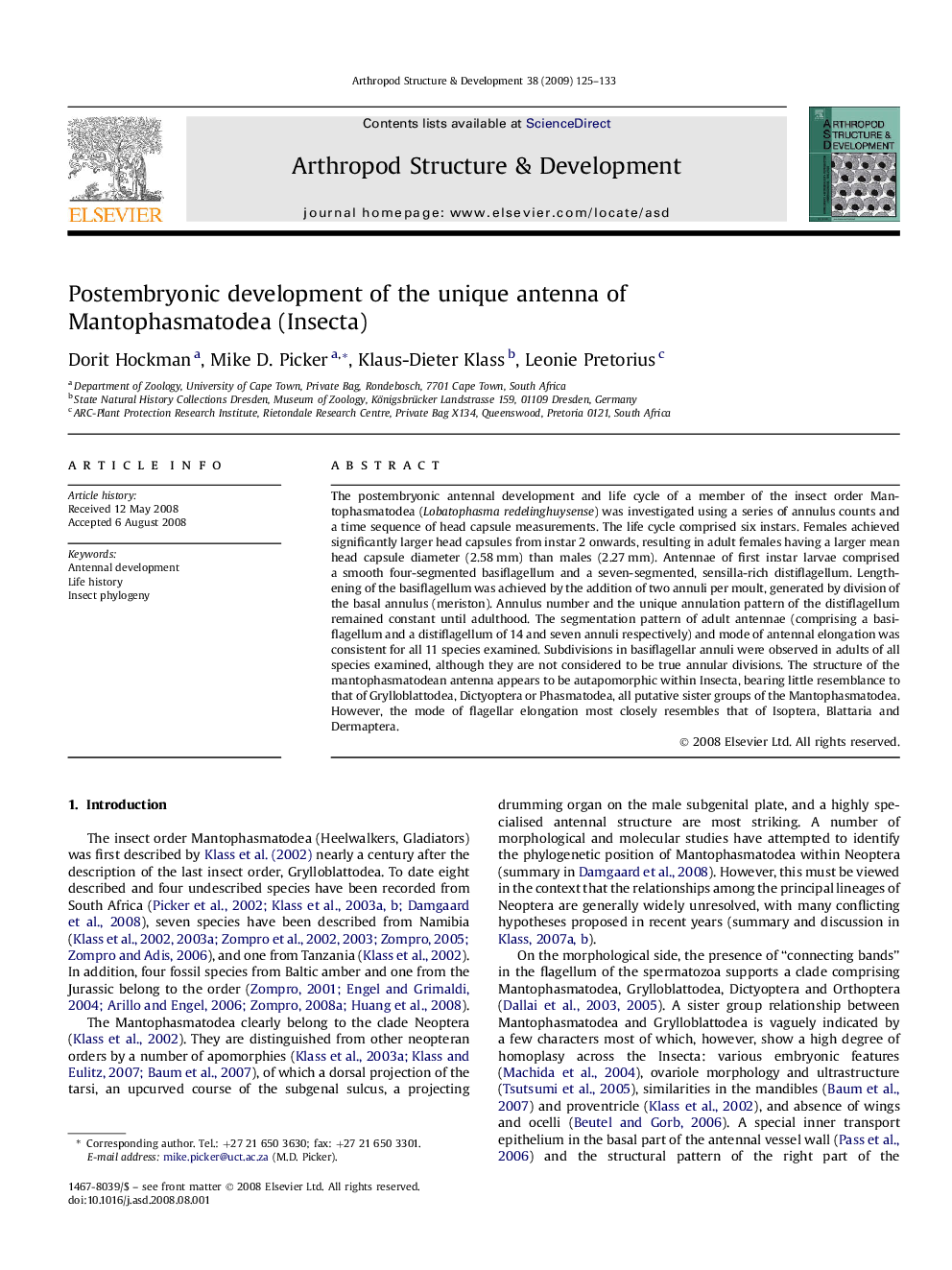| Article ID | Journal | Published Year | Pages | File Type |
|---|---|---|---|---|
| 2778957 | Arthropod Structure & Development | 2009 | 9 Pages |
The postembryonic antennal development and life cycle of a member of the insect order Mantophasmatodea (Lobatophasma redelinghuysense) was investigated using a series of annulus counts and a time sequence of head capsule measurements. The life cycle comprised six instars. Females achieved significantly larger head capsules from instar 2 onwards, resulting in adult females having a larger mean head capsule diameter (2.58 mm) than males (2.27 mm). Antennae of first instar larvae comprised a smooth four-segmented basiflagellum and a seven-segmented, sensilla-rich distiflagellum. Lengthening of the basiflagellum was achieved by the addition of two annuli per moult, generated by division of the basal annulus (meriston). Annulus number and the unique annulation pattern of the distiflagellum remained constant until adulthood. The segmentation pattern of adult antennae (comprising a basiflagellum and a distiflagellum of 14 and seven annuli respectively) and mode of antennal elongation was consistent for all 11 species examined. Subdivisions in basiflagellar annuli were observed in adults of all species examined, although they are not considered to be true annular divisions. The structure of the mantophasmatodean antenna appears to be autapomorphic within Insecta, bearing little resemblance to that of Grylloblattodea, Dictyoptera or Phasmatodea, all putative sister groups of the Mantophasmatodea. However, the mode of flagellar elongation most closely resembles that of Isoptera, Blattaria and Dermaptera.
